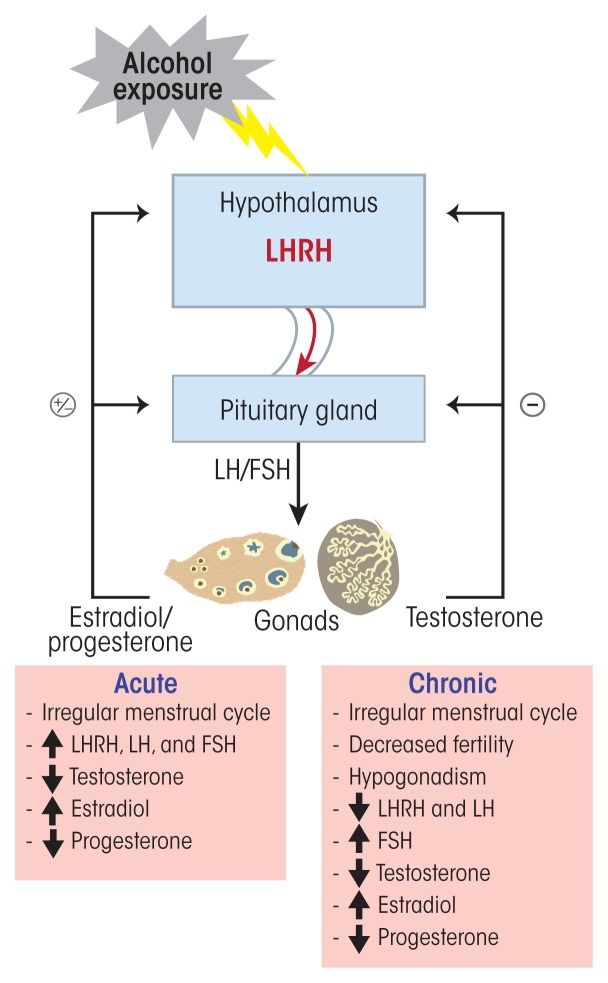Figure 2.
Alcohol’s effects on the hypothalamic–pituitary–gonadal (HPG) axis. Neurons in the hypothalamus release luteinizing hormone–releasing hormone (LHRH) to the hypophyseal-portal blood system. LHRH then stimulates the secretion of gonadotropins (i.e., LH and FSH). During the ovary’s follicular phase, FSH stimulates the development of a dominant follicle, which produces and secretes estradiol. Estradiol then stimulates an LH and FSH surge during midcycle of the menstrual cycle. LH stimulates ovulation and the development of the corpus luteum, which then produces and secretes progesterone. In the testis, LH stimulates testosterone production and release, while FSH controls spermatogenesis. HPG axis function is controlled through feedback loop mechanisms. Testosterone inhibits LHRH, LH, and FSH secretion through negative feedback, whereas estradiol and progesterone both can have negative- and positive-feedback actions, depending on the stage of the ovarian cycle, and can inhibit or stimulate the release of LHRH, LH, and FSH. Acute alcohol exposure results in increased LHRH, LH, FSH, and estradiol and decreased testosterone and progesterone. Chronic alcohol exposure, in contrast, induces a decrease in LHRH, LH, testosterone, and progesterone and an increase in estradiol and FSH. These alcohol-induced hormonal dysregulations cause a multitude of reproductive disorders, such as menstrual cycle irregularity, decreased fertility, and hypogonadism.

